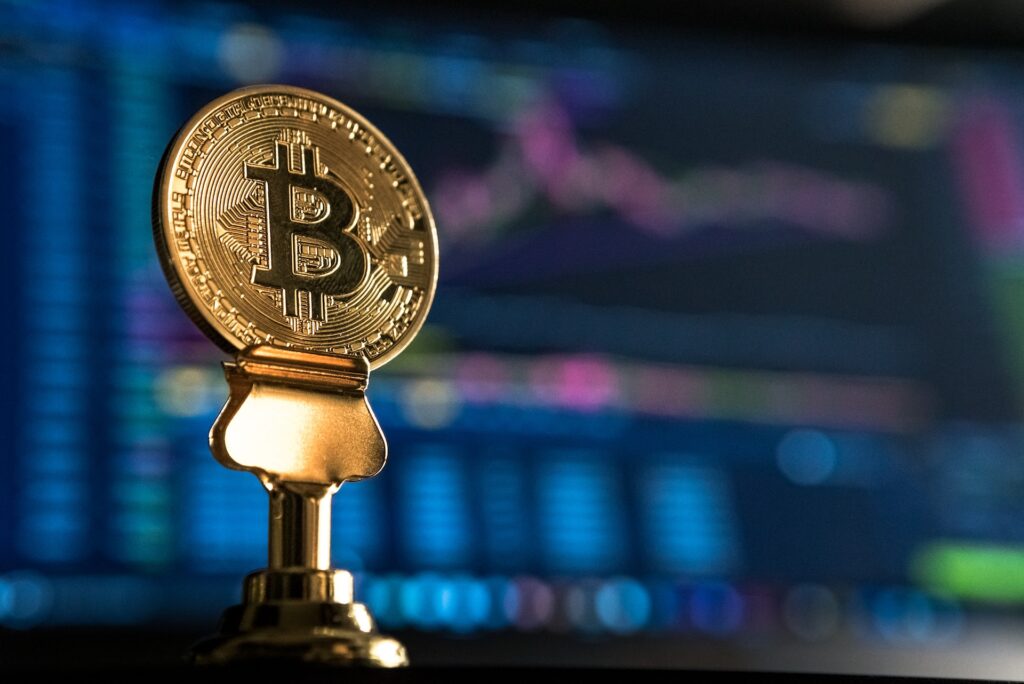
Bitcoin has become a global buzzword that’s hard to ignore. It’s taken the world by storm, revolutionizing our understanding of money and how it works. With its increasing popularity over the years, there is no doubt that bitcoin is here to stay. But what exactly is bitcoin? How does it work? Who created it? And most importantly, what is bitcoin used for? In this blog post, we’ll dive into everything you need to know about bitcoin- from buying and mining to scams and more. So sit back and get ready to understand the basics of this fascinating digital currency!
What is Bitcoin?
Bitcoin is a digital currency that operates on a decentralized network, which means it’s not controlled by any central authority. In simpler terms, bitcoin can be thought of as virtual cash that you can use to buy goods and services online or in person.
Unlike traditional currencies like the US dollar or Euro, bitcoin isn’t backed by any government or financial institution. Instead, its value comes from the fact that people believe in it and are willing to accept it as payment for goods and services.
One of the key features of bitcoin is its transparency. Every transaction made using bitcoin is recorded on a public ledger called the blockchain. This means that all transactions are visible to anyone who wants to see them.
Since there are no intermediaries involved in bitcoin transactions, fees tend to be lower than those charged by banks and other financial institutions. Additionally, because there’s no need for physical checks or credit cards when using bitcoins, payments can be made quickly and easily.
While it may seem complex at first glance, understanding what Bitcoin is really about simply boils down to recognizing its potential as an alternative form of currency – one free from governmental control with low transaction fees offering greater convenience than traditional methods!
How Does Bitcoin Work?
Bitcoin is a decentralized digital currency that operates using a peer-to-peer network. Transactions are recorded on a public ledger called the blockchain, which ensures transparency and security.
To use Bitcoin, users must first create a digital wallet, which holds their private keys – cryptographic codes that allow them to access their funds. They can receive Bitcoins by sharing their public address with other users or by mining new coins.
When making transactions, users sign them with their private keys to verify ownership and transfer funds to another user’s public address. Once confirmed by the network through complex mathematical computations performed by nodes across the world, the transaction is added to the blockchain permanently.
The process of adding transactions to the blockchain is known as mining. Miners compete against each other by solving complex mathematical problems in exchange for newly minted Bitcoin rewards and transaction fees paid by users.
Bitcoin works as an efficient and secure way of transferring value without relying on intermediaries such as banks or governments. Its decentralized nature also makes it resistant to censorship and control from external entities.
Who Created Bitcoin?
The true identity of the person or group behind Bitcoin is still unknown. The pseudonym used by its creator, Satoshi Nakamoto, has never been associated with a real-life individual or organization.
There are several theories about who might have created Bitcoin. Some believe it was invented by a lone programmer while others speculate that it was developed by a team of people working together. Despite numerous attempts to uncover the truth, no one has been able to definitively identify the mastermind behind this revolutionary technology.
One thing we do know is that whoever created Bitcoin possessed an impressive amount of technical knowledge and expertise in cryptography and computer programming. The system they designed incorporates highly complex mathematical algorithms and protocols that ensure its security and integrity.
Regardless of their identity, the legacy left by Bitcoin’s mysterious creator will undoubtedly continue to shape our world for years to come as more people recognize the value and potential of decentralized digital currencies like BTC.
What is Bitcoin Used For?
Bitcoin has come a long way since its creation in 2009. It was initially designed as a decentralized digital currency to allow users to transact without involving intermediaries like banks or governments. However, today, Bitcoin’s uses have expanded beyond just being a currency.
One of the most common uses of Bitcoin is for online purchases. Due to its ability to facilitate fast and secure transactions with low fees, many businesses now accept it as payment for goods and services.
Moreover, Bitcoin offers an alternative investment option for people looking to diversify their portfolio. With the growth in popularity and demand for Bitcoin, its value has increased significantly over the years making it an attractive investment asset class.
Another use case of Bitcoin is remittances – sending money across borders. This is especially useful in countries where traditional banking systems are either inefficient or too costly. By using bitcoin instead of traditional methods like wire transfers or money orders, individuals can save time and money on transaction fees.
In addition to these practical applications, some proponents believe that bitcoin could play a role in protecting privacy rights by offering anonymity in financial transactions.
While still evolving and facing challenges such as regulatory uncertainty and price volatility, bitcoin continues to find new use cases beyond its original intention as a decentralized digital currency.
How to Buy Bitcoin
Buying Bitcoin is a straightforward process, but it requires some basic knowledge and preparation. Here are some steps to guide you:
First, create a digital wallet to store your Bitcoin. You can choose from various online wallets or physical devices like USB sticks.
Next, find a reputable cryptocurrency exchange that supports Bitcoin trading. Some popular options include Coinbase, Binance, and Kraken.
Once you have selected an exchange platform, sign up for an account and complete the verification process by providing personal information and identification documents.
After completing the verification process, deposit funds into your account using bank transfer or credit/debit card payment methods supported by the exchange platform.
Navigate to the Buy/Sell section of the exchange interface and select Bitcoin as your desired currency. Enter the amount of fiat currency (USD/EUR) you want to spend on buying Bitcoin and confirm the transaction.
Keep in mind that buying Bitcoin involves transaction fees charged by both exchanges and payment providers. Additionally, cryptocurrency prices are volatile and subject to market fluctuations so be prepared for potential price swings before making any investment decisions.
Bitcoin Mining
Bitcoin mining is the process of adding new transactions to the public ledger and verifying them. This is done by solving complex mathematical equations using powerful computers. Miners are rewarded with new bitcoins for their efforts, which incentivizes more people to mine.
Mining involves creating a block containing several transaction records, which must be verified before being added to the blockchain. The verification process requires miners to solve a complex mathematical puzzle through trial and error until they find the correct solution.
Once a miner solves the puzzle, they broadcast it across the network for other miners to verify. If enough miners agree that the solution is valid, then it’s added as a new block on top of previous blocks in the chain.
As more and more miners join in on Bitcoin mining, competition increases and so does difficulty level of puzzles as well as rewards reduce over time.
Despite its popularity among early adopters of cryptocurrency enthusiasts who helped create this ecosystem; energy consumption by bitcoin mining has been subject criticism due largely because it can contribute significantly towards greenhouse gas emissions at large scale operations
Bitcoin Scams
Bitcoin scams are unfortunately a common occurrence in the world of cryptocurrency. Scammers use various tactics to trick people into giving them their Bitcoin or money, including phishing emails, fake investment schemes, and Ponzi schemes.
One type of Bitcoin scam is the classic Ponzi scheme. In this scheme, scammers promise high returns on investments made with Bitcoin but don’t actually invest the funds. Instead, they use new investors’ money to pay off earlier investors until the whole thing eventually collapses.
Another type of scam is a fake investment opportunity where someone claims to be an expert trader who can double or triple your investment in just a short amount of time. They may also ask for you to transfer Bitcoin directly to their wallet without any clear explanation as to what it will be used for.
Phishing scams are also prevalent in the Bitcoin world. Scammers will create convincing emails or websites that appear legitimate and try to get users to enter sensitive information such as private keys or passwords which gives them access control over your account.
It’s important for anyone interested in investing in Bitcoin or other cryptocurrencies do proper research before sending any money anywhere online. One should also look out for red flags such as unrealistically high returns on investments and always verify all sources before providing personal information about yourself
Conclusion
Bitcoin is a revolutionary Digital currency that has taken the world by storm. It offers an alternative to traditional money and banking systems, allowing for peer-to-peer transactions without intermediaries.
Bitcoin’s decentralized system provides security and anonymity while also allowing users to maintain control over their assets. However, it’s important to note that with this freedom comes responsibility – as there are risks associated with using Bitcoin such as scams and market volatility.
Understanding what Bitcoin is and how it works can be complex, but it’s worth taking the time to learn about this innovative technology that could shape the future of finance. Whether you’re interested in investing or just curious about cryptocurrency, awareness is key when navigating the world of Bitcoin.



